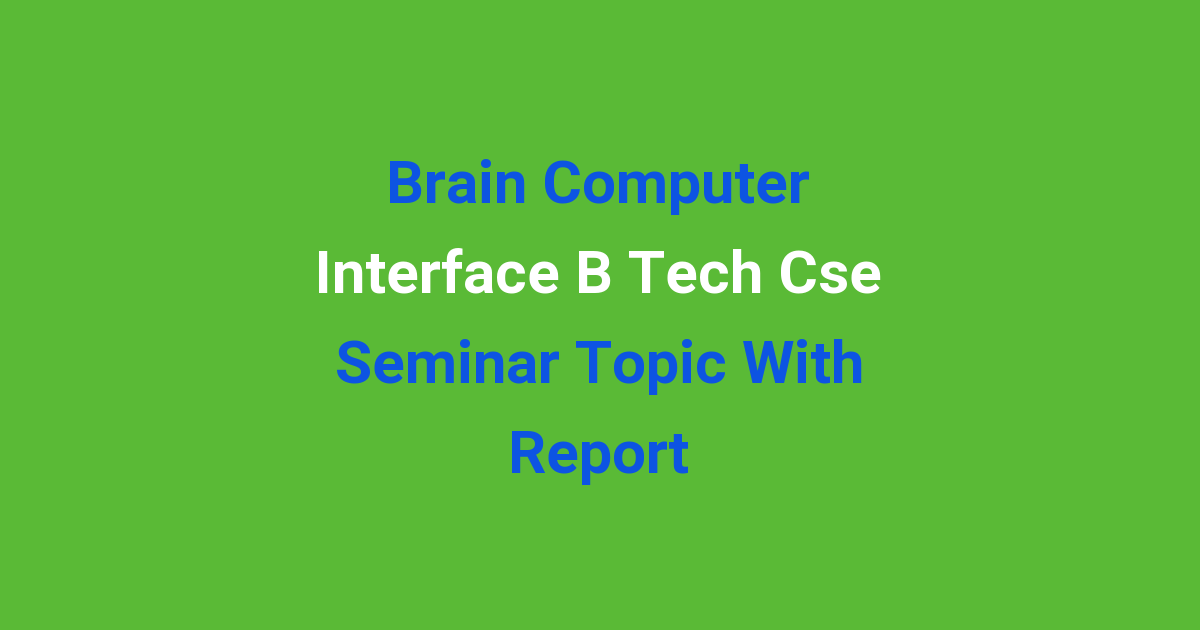Seminar topic with report for B.Tech CSE on Brain-Computer Interface.
Introduction
Brain-Computer Interface (BCI) is a revolutionary technology that allows direct communication between the brain and external devices. It holds immense potential in various fields, including healthcare, gaming, and communication. This seminar topic explores the current trends in BCI technology and the advancements that have been made in this domain.
Problem Statement
The traditional input devices, such as keyboards and mouse, have limitations in terms of speed and accuracy. Moreover, these devices are not suitable for individuals with physical disabilities. There is a need for a more efficient and user-friendly interface that can enable seamless interaction with machines.
Existing System
The existing systems rely on conventional input devices for communication between humans and computers. While these devices have served us well for many years, they have their limitations. Users with physical disabilities may find it challenging to operate these devices, leading to communication barriers.
Disadvantages
The disadvantages of the existing system include limited speed and accuracy, reliance on physical movement, and accessibility issues for individuals with disabilities. These shortcomings highlight the need for an alternative interface that can address these challenges effectively.
Proposed System
The proposed system is a Brain-Computer Interface that enables direct communication between the brain and external devices. This system utilizes EEG signals to interpret the user’s intentions and translate them into actionable commands. By bypassing the need for physical movement, this interface offers a faster and more intuitive way of interacting with machines.
Advantages
The advantages of the proposed Brain-Computer Interface include enhanced speed and accuracy, improved accessibility for individuals with physical disabilities, and a more natural way of interacting with computers. This technology has the potential to revolutionize the way we communicate with machines and open up new possibilities in various industries.
Features
Some of the key features of the Brain-Computer Interface include real-time feedback, customizable settings, and compatibility with a wide range of applications. Users can control devices, play games, and even communicate with others using only their thoughts. This level of control and versatility makes BCI a highly sought-after technology in the field of computer science and engineering.
Conclusion
In conclusion, the Brain-Computer Interface is a groundbreaking technology that has the potential to redefine the way we interact with machines. By enabling direct communication between the brain and external devices, BCI offers a faster, more intuitive, and more accessible interface for users. As the technology continues to evolve, we can expect to see even more innovative applications and advancements in this field.

